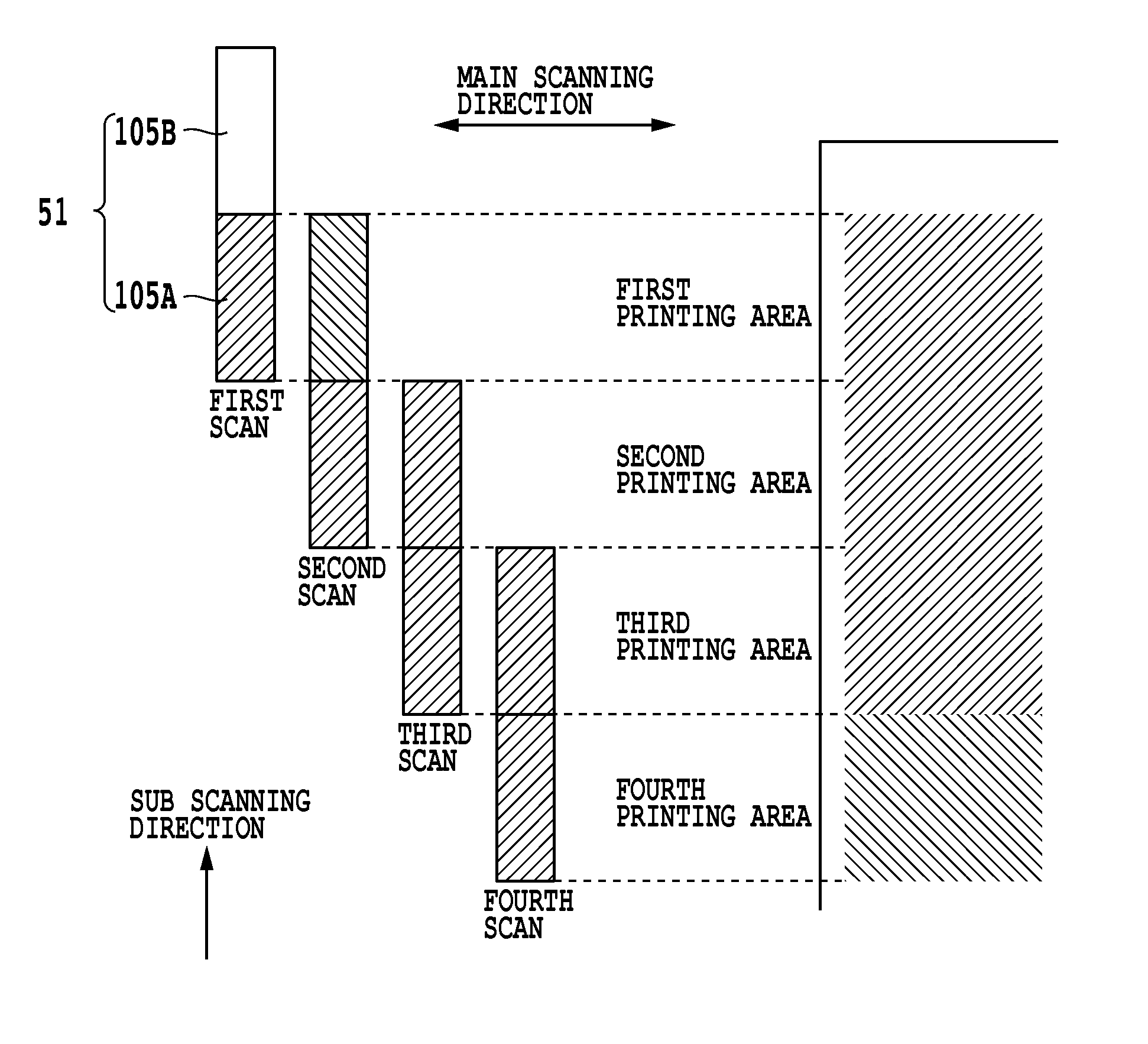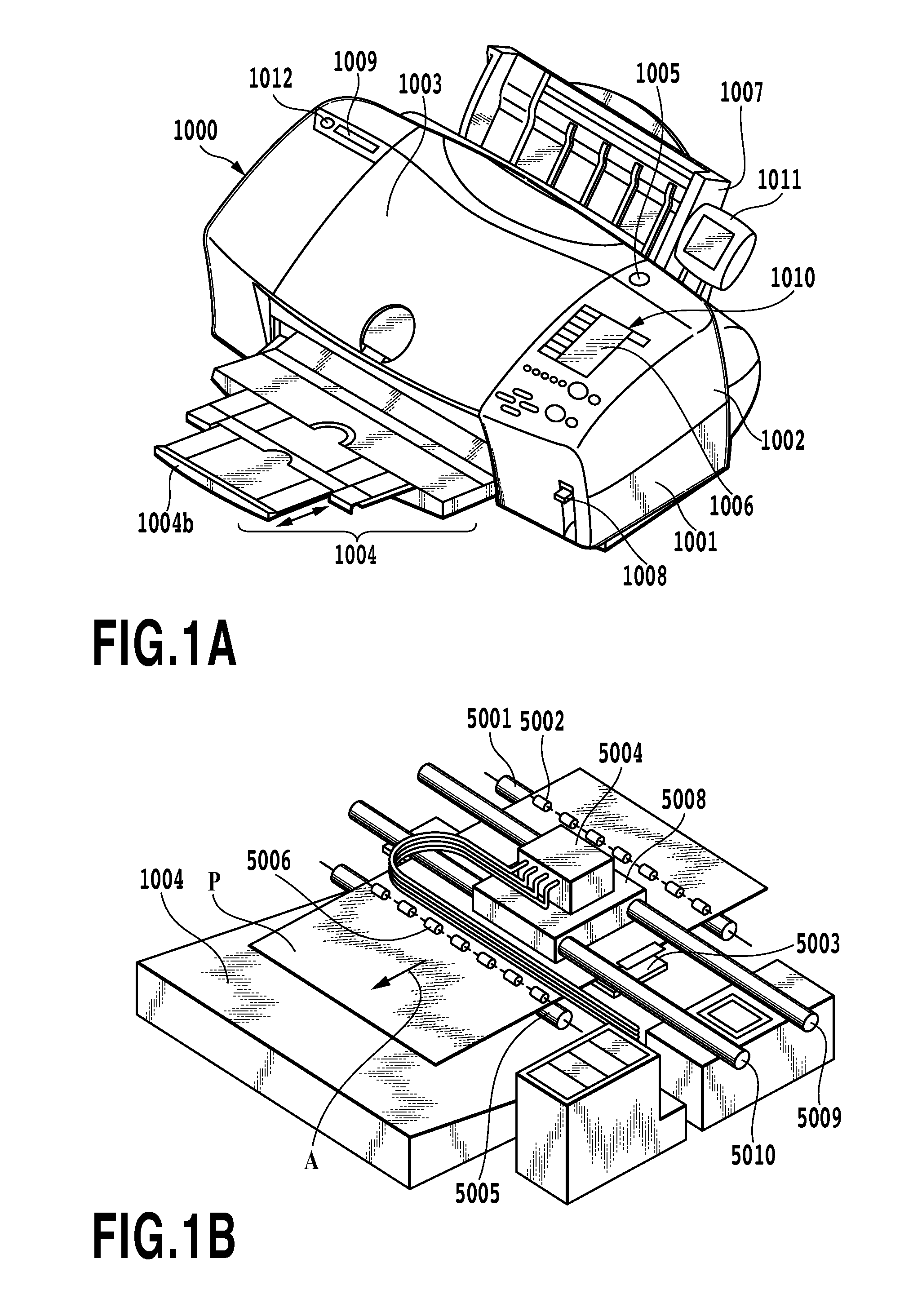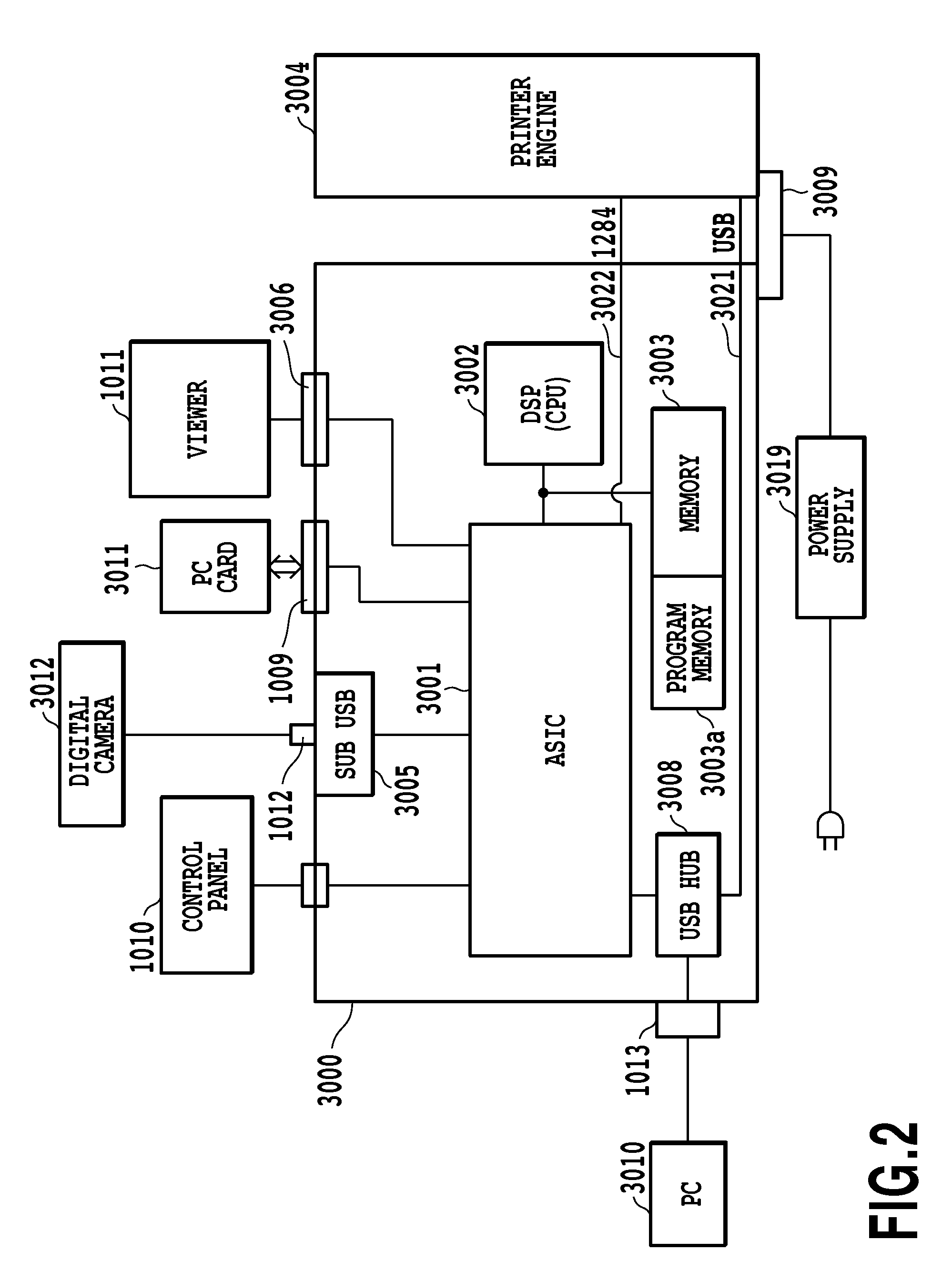Image processor and image processing method generating first and second multi-value density data or performing quantization based on an image characteristic
a multi-value density and image technology, applied in the direction of digitally marking record carriers, visual presentation using printers, instruments, etc., can solve the problems of density fluctuation and density unevenness, deviation of the dot printing position between, and defects in the image, so as to suppress both unevenness
- Summary
- Abstract
- Description
- Claims
- Application Information
AI Technical Summary
Benefits of technology
Problems solved by technology
Method used
Image
Examples
embodiment 1
[0055]FIG. 3 is a block diagram for explaining image processing in the case of performing multipass printing to complete an image in the same area on a printing medium by two printing scans as illustrated in FIG. 7. A control unit 3000 comprises: a multi-value image data input unit (61), a color conversion / image data division unit (62), gradation correction processing units (63-1, 63-2) and quantization processing units (65-1, 65-2). On the other hand, a printer engine 3004 comprises binary data division processing units (67-1, 67-2).
[0056]When multi-value RGB image data (256 values) is inputted from an external device by way of the multi-value image data input unit 61, this inputted image data (original image) is sent to an image characteristic analysis / parameter setting unit 60. The image characteristic analysis / parameter setting unit 60 examines the entire original image and analyzes whether the original image is a portrait (first characteristic) or something else (characteristic...
embodiment 2
Variation of Embodiment 2
[0121]The quantization method for achieving the desired dot overlap rate is not limited to that described above. It is not absolutely necessary to set printing (1) and no printing (0) through comparison with threshold values. For example, in the case of two planes, a 2-dimensional table could also be prepared in which the values K1′ and K2′ are primarily set to printing (1) or no printing (0) by using both K1ttl and K2ttl as reference values. Moreover, in the case of three planes, a 3-dimensional table could also be prepared in which the values K1′, K2′ and K3′ are primarily set by using K1ttl, K2ttl and K3ttl as reference values.
[0122]Details about the tables are omitted, however; using multi-dimensional tables such as these has merit in that control becomes simpler, and the dot overlap rate can be controlled with a high degree of freedom. On the other hand, using a 1-dimensional threshold value table as illustrated in Table 2 has merit in that a table can ...
embodiment 3
[0124]In recent years, most image processing is performed at a lower (rougher) resolution than the printing resolution, and a form is used in which image data is sent to the printer engine of the printer with the multi-value image data converted to L-value (L is 3 or greater) data that has a lower gradation than 256-gradation image data. In this case, the printer engine comprises a dot pattern (index pattern) that is stored in memory for converting the received low-gradation L-value data to binary data that corresponds to the printing resolution.
[0125]In the following, an example of 3-value quantization is explained as the L-value quantization, however; needless to say, the value of L can be a value that is 3 or greater. Moreover, in the explanation below, as in the embodiments described above, the method for controlling the dot overlap rate will be explained for 2-pass multipass printing as an example, however; of course this embodiment as well, can correspond to a plurality of pri...
PUM
 Login to View More
Login to View More Abstract
Description
Claims
Application Information
 Login to View More
Login to View More - R&D
- Intellectual Property
- Life Sciences
- Materials
- Tech Scout
- Unparalleled Data Quality
- Higher Quality Content
- 60% Fewer Hallucinations
Browse by: Latest US Patents, China's latest patents, Technical Efficacy Thesaurus, Application Domain, Technology Topic, Popular Technical Reports.
© 2025 PatSnap. All rights reserved.Legal|Privacy policy|Modern Slavery Act Transparency Statement|Sitemap|About US| Contact US: help@patsnap.com



